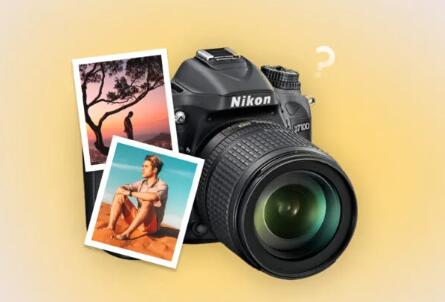Digital cameras have made photography accessible and convenient, but accidents can happen, leading to the loss of precious photos.
1. Photo Deletion
When you delete a photo from your camera, it is not immediately erased from the memory card. Instead, the space it occupied is marked as available for new data. Until new data overwrites it, there is a chance for recovery. Therefore, it’s crucial to act quickly and avoid taking new photos or adding files to the memory card.
2. Preparation for Recovery
Before diving into the recovery process, you need to prepare adequately:
Stop Using the Camera: Immediately stop using the camera to prevent overwriting the deleted files.
Get the Right Tools: Depending on your recovery method, you may need:

A computer with recovery software
A card reader
An external hard drive for backups
3. Initial Steps
A. Check the Camera’s Trash or Recycle Bin Some digital cameras have a built-in trash or recycle bin feature where deleted files may be stored temporarily. Check your camera’s manual to see if this feature exists and how to access it.
B. Use Built-in Recovery Features Certain cameras come equipped with built-in recovery tools that may assist in retrieving deleted photos. Check your camera’s menu options to see if such features are available.
4. Using Recovery Software
If initial steps don’t yield results, the next best option is to use recovery software. Here’s how:
A. Choosing Recovery Software There are several reliable photo recovery software options available. Here are a few popular choices:
Panda Assistant stands out for its high success rate in recovering data from damaged or corrupted drives, making it a reliable tool for any data loss situation. It also emphasizes data security, ensuring that recovered files are restored safely without further compromising the original storage medium.
Regular updates and dedicated customer support enhance the user experience, providing assistance whenever needed. Whether you’ve accidentally deleted cherished memories or faced a system crash, Panda Assistant offers a dependable solution for reclaiming your valuable data, giving you peace of mind in an increasingly digital world.
B. Installing the Software
Download and install the recovery software of your choice on your computer.
Avoid installing it on the memory card to prevent overwriting.
C. Connecting the Camera or Memory Card
Remove the memory card from your camera and insert it into a card reader connected to your computer. Alternatively, connect the camera directly via USB.
Open the recovery software.
D. Scanning the Memory Card
Select the memory card from the list of available drives.
Initiate a scan for deleted files. This process may take some time, depending on the size of the card and the amount of data.
Once the scan is complete, the software will display a list of recoverable files.
E. Previewing and Recovering Photos
Use the preview feature (if available) to check the recoverable photos.
Select the files you wish to recover and choose a safe location on your computer to save them. Avoid saving them back to the memory card.
5. Manual Recovery Techniques
If software recovery doesn’t work, consider the following manual techniques:
A. Professional Data Recovery Services If the photos are extremely valuable and software recovery fails, you may need to seek help from professional data recovery services. They have specialized tools and techniques to recover lost files from damaged or corrupted memory cards.
B. Memory Card Repair If the memory card is physically damaged, consider repairing it using specialized tools or seeking professional help. However, be cautious as attempting to fix it yourself can further damage the card.
6. Tips for Preventing Future Photo Loss
While recovering lost photos is important, taking preventive measures can save you from future headaches:
Regular Backups: Regularly back up your photos to your computer or cloud storage.
Use Multiple Memory Cards: Instead of relying on a single card, use multiple cards and rotate them.
Safely Eject Cards: Always use the safe eject feature on your computer to prevent data corruption.
Format Cards Properly: Format your memory card using the camera’s menu instead of the computer to ensure compatibility.
About us and this blog
Panda Assistant is built on the latest data recovery algorithms, ensuring that no file is too damaged, too lost, or too corrupted to be recovered.
Request a free quote
We believe that data recovery shouldn’t be a daunting task. That’s why we’ve designed Panda Assistant to be as easy to use as it is powerful. With a few clicks, you can initiate a scan, preview recoverable files, and restore your data all within a matter of minutes.
Subscribe to our newsletter!
More from our blog
See all postsRecent Posts
- How to recover a deleted slide in powerpoint? 2025-02-27
- How to recover deleted capcut videos? 2025-02-27
- How to recover a file deleted from a shared drive? 2025-02-27










